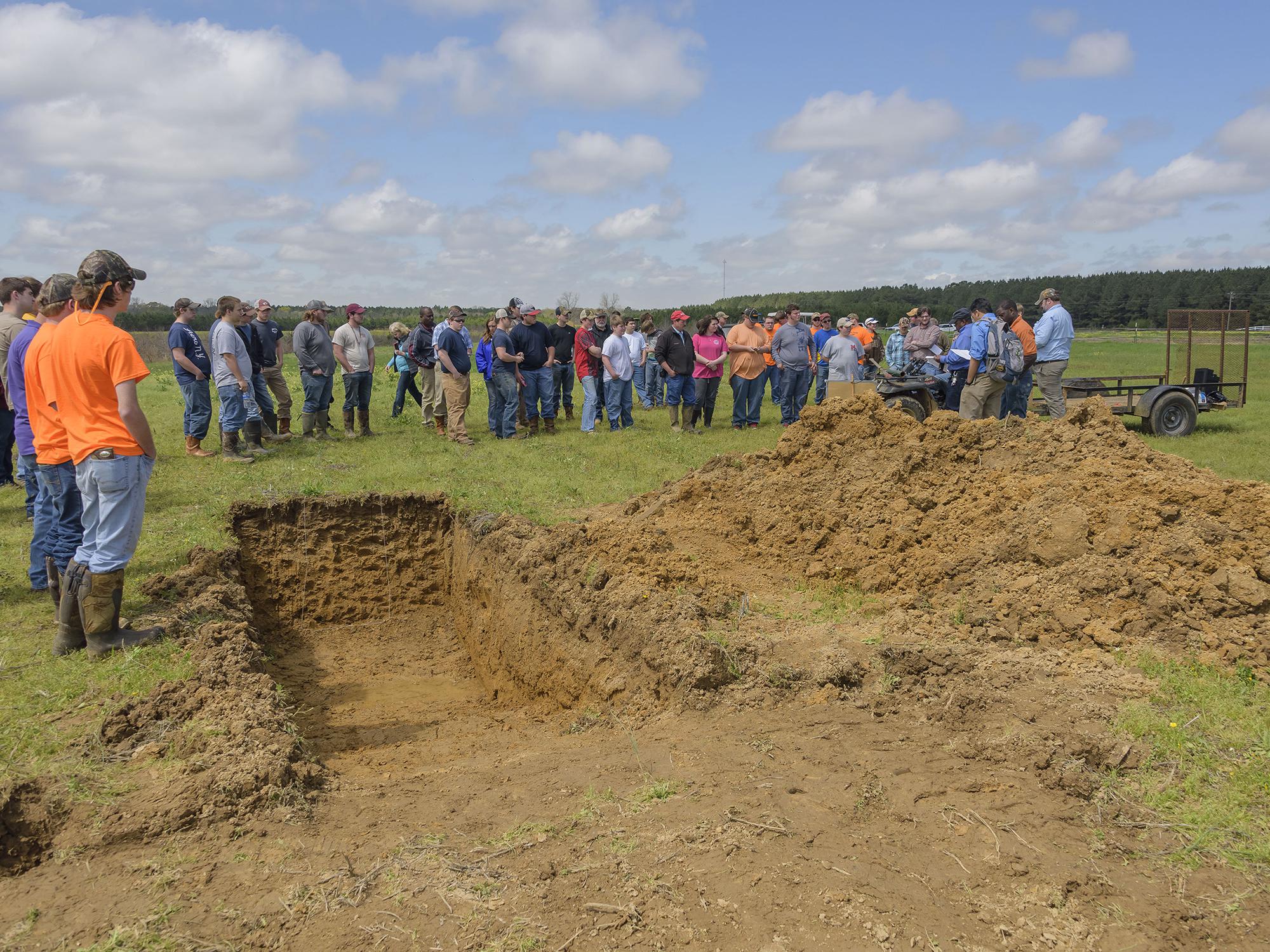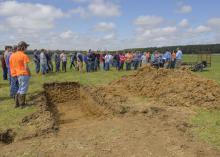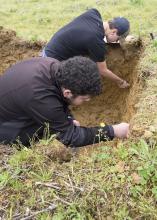Information Possibly Outdated
The information presented on this page was originally released on March 27, 2015. It may not be outdated, but please search our site for more current information. If you plan to quote or reference this information in a publication, please check with the Extension specialist or author before proceeding.
Students learn principles of land use, conservation
NEWTON, Miss. -- More than 50 junior high and high school students gathered inside a freshly dug pit at the Mississippi State University Coastal Plain Branch Experiment Station as part of an educational competition to teach them the roles that soil plays in farming and construction.
With knives and clipboards, students picked at the soil, examined it and touched it before writing down their observations. They later learned that the pit had moderately deep root development in the soil -- ¬one of many components that made the location favorable for growing row crops -- before moving on to find out what land uses three other pits could support.
Soil texture, slope and depth were among several categories the students studied as part of the Mississippi FFA/4-H State Land Judging Contest held at the station March 24. They evaluated how soils at different locations in the pasture would support agricultural activity or housing. Student groups sponsored by the two agricultural education organizations competed to advance to a national land judging event later this year.
Larry Oldham, soil specialist with the MSU Extension Service, said MSU faculty and Natural Resources Conservation Service (NRCS) staff typically train participating teams in advance in simulated settings to give students an idea of what to expect at the contest. Winter weather hampered training efforts this year, he said, but participants still skillfully demonstrated their abilities to identify soil properties and determine how they affect land-use options.
“The students evaluate several factors based on the conditions of the soil to decide the best management of the soil in a given area, including optimum crop selection and appropriate conservation practices,” Oldham said.
The statewide contest is held each year, and the last two have been on MSU research farms. This year’s event was a collaboration involving MSU, NRCS, the Mississippi Association of Conservation Districts Auxiliary and the Mississippi Soil and Water Conservation Commission.
Oldham said one major category requiring the students’ attention is soil permeability, or its ability to let rainwater pass through it.
“Soil is the great regulator,” he said. “Rain comes out of the sky and does one of three things with respect to soil. It hits the ground and goes in, it hits the ground and runs off, or it stays where it lands. The amount of regulation is dependent upon some of the factors the kids are observing.”
James Curtis, assistant state soil scientist with NRCS-Mississippi, said the ability to interpret proper land use is critical to conservation and getting the most out of natural resources.
“What type of limitations may occur on a site as a result of putting a house there or planting crops there is something that should always be considered before doing anything with the land,” Curtis said.
West Watkins, advisor for Nanih Waiya FFA Chapter, said he felt such a skill is gradually becoming less known among young people.
“Not a lot of kids realize how important land use is and what all you can use land for,” Watkins said. “It’s a skill they can use in the future or develop into a teaching or researching career that requires you to have a background in soil science.”
The competition was Tishomingo County 4-H member Kelly Aurora’s first. She said it was an ideal opportunity to see what she had studied about soil properties firsthand.
“I’m having a lot of fun because I’m getting out there and doing it myself instead of just reading about it in a book,” Kelly said. “It’s helpful, and it’s easy to learn a lot very fast.”



